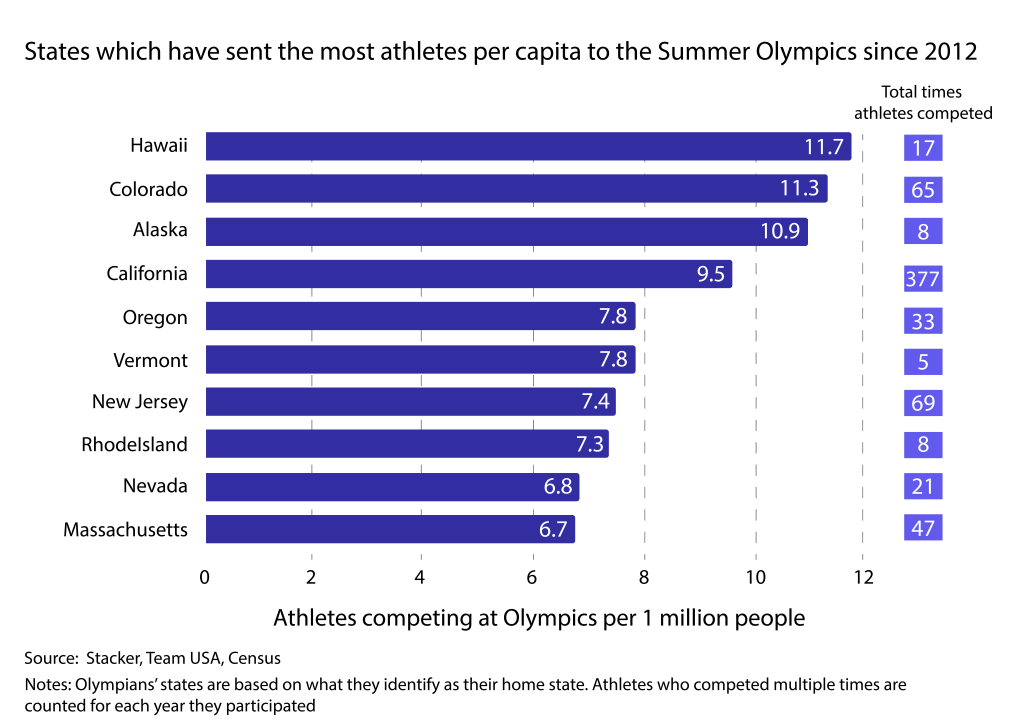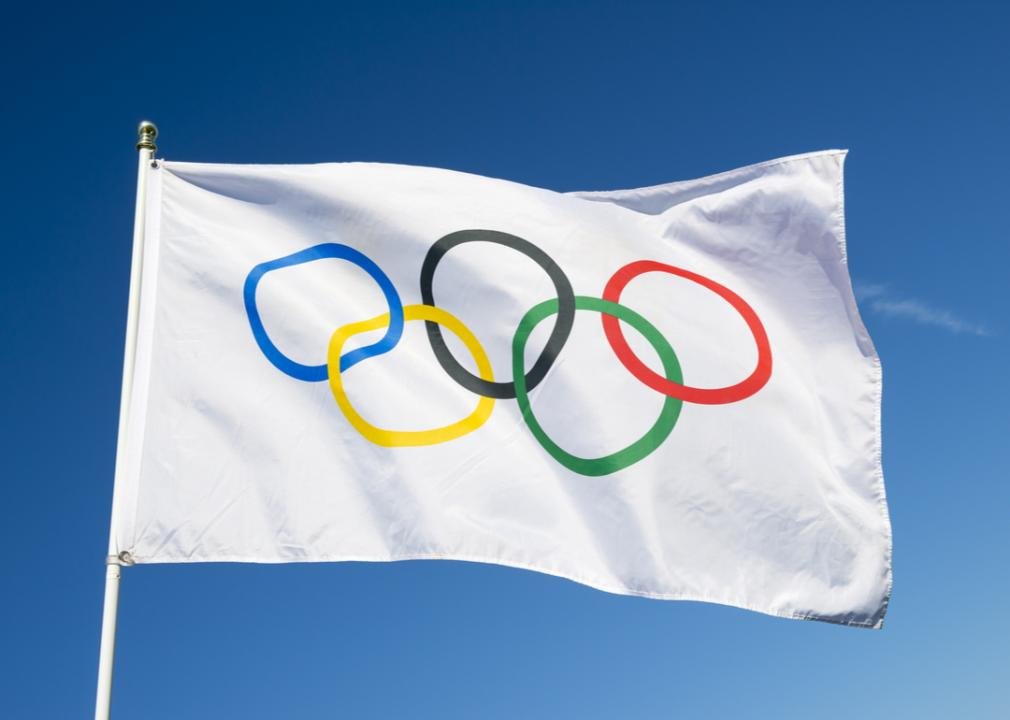How many Olympians come from each state in the United States
lazyllama // Shutterstock
How many Olympians come from each state in the United States
the first recorded Olympics happened in 776 BC. AD when, according to the written record, a cook named Coroebus won the 192-meter foot race, the only event at the time.
The Games were held as a festival to celebrate and honor Zeus, the king of the Greek gods. Although the Olympic Games began with a single event, in 724 BC. AD, longer and shorter foot races were added, followed by pentathlon, boxing and chariot racing over the next century.
Since the advent of the modern Olympic Games in 1896, the event has grown of 280 athletes representing 12 countries at a gigantic festival with thousands of participants from more than 200 nations around the world. Some countries may specialize in just a few events, but the vastness of the United States allows them to have a large number of athletes competing in a variety of sports. These Olympians have often trained since childhood, taking advantage of the resources available in their home countries.
Stacker list data compiled from United States team and the United States Census Bureau to break down the number of Olympians from each state, based on what athletes identified as their country of origin for each Olympic year, the data was available. This includes London (2012), Sochi (2014), Rio (2016), Pyeongchang (2018), Tokyo (2020) and Beijing (2022). States are ranked by total number of Olympic athletes sent to the Games per 1 million people to standardize data across states. Repeat offenders are counted for each year they competed, meaning states are ranked by the number of times athletes competed.
Keep reading to see which states send the most athletes to the Olympics and how your state compares to the rest of the country.
![]()

Emma Rubin // Stacker
Vermont has sent the most athletes per capita to the Olympics since 2012
Although it has only sent athletes to the Olympics 42 times in the past five Olympics, Vermont’s relatively small population means it tops the list with 65 athletes per 1 million people. By comparison, California athletes have competed a total of 448 times in the last five Games, but the state has a standardized measure of 11 athletes per 1 million population. Almost all 50 states have had at least one athlete competing since 2012. The only exception is West Virginia, which has not sent an athlete to the Olympics since John Kruk won a gold medal for the shot put competition at the 1996 Olympics.

Emma Rubin // Stacker
Hawaii has sent the most athletes per capita to the Summer Olympics since 2012
There is no doubt that Hawaii is a fantastic place to train for many Summer Olympic sports. Swimming, diving, sailing, kayaking, and surfing are common life skills or hobbies for residents of the Hawaiian Islands. The state tops the list, with 11.7 athletes per million population sent to the Summer Games and athletes competing 17 times in total. Colorado, a landlocked state, comes in a surprising second, sending 11.3 athletes per 1 million people. Similar to the overall trends explored in the last graph, California ranks fourth, sending 9.5 athletes per capita, but still having 337 instances of athletes competing.

Emma Rubin // Stacker
Vermont has sent the most athletes per capita to the Winter Olympics since 2014
The many opportunities to ski, snowboard, and participate in other snow-related sports make Vermont the perfect breeding ground for Winter Olympic athletes. With 57.5 athletes per 1 million population sent to the Winter Olympics, the state takes first place with more than double Alaska, the second sending 24.5 athletes per million population. All of the top 10 states that have sent the most athletes per capita to the Winter Olympics since 2014 are well above the Mason-Dixon line, showing that cooler temperatures and heavy snow really do offer the best environment for a budding Winter Olympian.


Comments are closed.